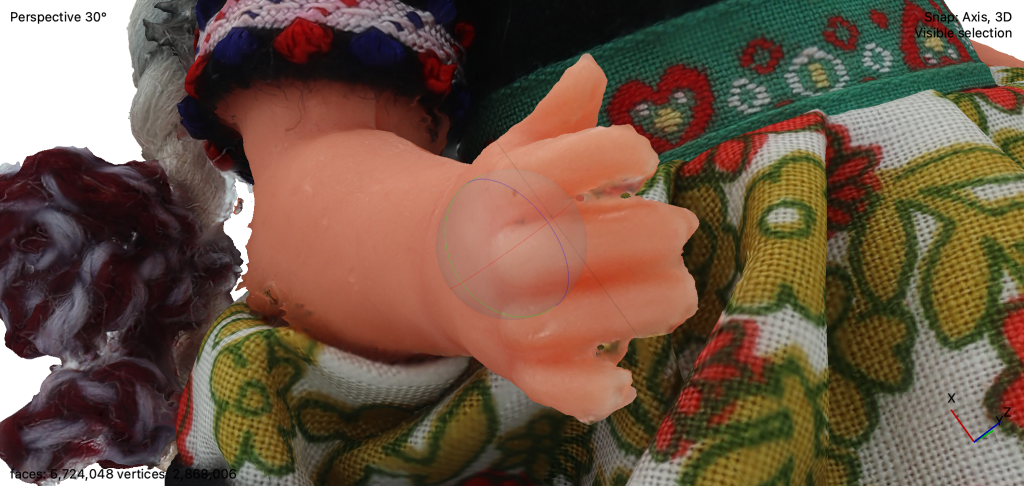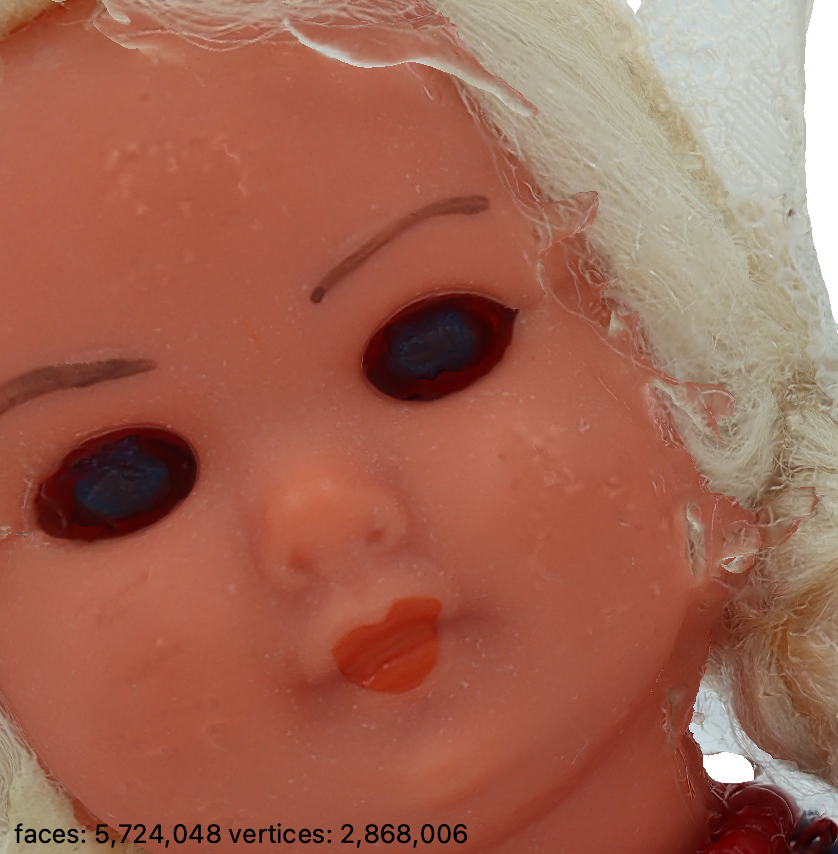
The digitalization of the Dutch doll was the first success we had in Metashape. After taking the pictures and implanting them into the Metashape program we were able to see first satisfying results. Especially the details we were able to capture from the fabric, the stitching, and the lace were giving us a confidence boost in our project. The next step was of course to clean up the model, delete any noise, and remove unwanted parts of the background. The noise around the doll, which came from some unavoidable movement of the object, was very little and therefore easy to erase. Besides these positive achievements, we also encountered further problems. While the textiles are captured nicely, the dolls' plastic skin parts create some complications.

The mono-colored arms and face of the doll have dents and blister-like proliferations when looking at the model in Metashape. In reality, the plastic does not have these characteristics, and we could understand how this happened in the digitalization process. The system was not able to recognize these smooth mono-toned parts of the model properly. These restrictions also worsened when we tried to create a model with a higher-quality resolution. In the first tries of creating this higher quality model, the program would eject a disproportioned and discolored model. Further, the beautiful details on the textiles were also appearing chunky and blurred in these first runs. This setback gave our meanwhile positive attitude a nudge.
